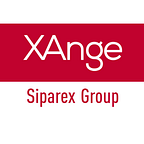Is Europe striking back? For the past ten years, the space industry — which used to be a playground for large industrial players — has been overwhelmed by new entrants such as Elon Musk’s SpaceX. Since 2009, $9 billion have been invested in “New space”, which represents 60% of the space industry’s investments. For too long “Old Space” incumbents have followed low risk-taking strategies, with satellite launchers bragging about their nearly 100% success rate. But to achieve that goal they had to cut on innovation: “let’s keep it the way it is!”. This is how they got disrupted by SpaceX and Blue Origin’ launchers and now the gap is probably too wide to be bridged. How can we change 30 years of low risk-taking corporate culture (and therefore innovation)?
Like many in other sectors of High Tech, the New space wave started in the US, with launchers and spread over the whole industry. What is the most striking is the outstanding number of constellations of earth-imaging satellites with mixed civil-military objectives. In this field, the world leaders Planet Labs and BlackSky are together valued at around $2.2 billion. Telecom constellations such as One Web or SpaceX are also leading the way connecting the whole world. Step by step the industry has structured itself with components’ manufacturers (thrusters, antennas, sensors, etc.) and the huge underlying data analytics market behind satellites. The sector’s first failures also started with the asteroid mining company Planetary Resources showing that the line between technological progress and feasibility is very real in these risky projects.
The New space wave is now hitting Europe, backed by the defence sector and public projects’ protectionism which are those startups’ first clients. As for examples, we can pick AerospaceLab in Belgium with its high-resolution observation constellations — also doing data analysis — and IcEye in Finland on SAR technology (synthetic aperture radar); technology brick suppliers such as ThrustMe and Exotrail — both positioned on small satellites’ thrusters; and data analysis startups such as Earthcube in military intelligence, Kayrros in the energy market or Descartes in the insurance field.
This mapping reveals different things:
- There are still too few startups tackling this area: we can count 66 startups in this mapping and with more than half are not that young… doing the math it represents 5 new startups per year in Europe.
- Their geography is quite unusual. As expected, France and the UK have the largest number of startups (in line with their place in both the Space and Venture industries), but Germany counts very few startups and the biggest surprise comes from countries such as Belgium, Switzerland or Spain with an unusual high density of startups. This could be explained by ESA’s resources allocation system in those countries where the space industry is not preempted by big corporates, thus favoring a better financing of startups.
- The average technological intensity of New Space startups is particularly high. Most of them have benefited from significant technology transfers from structures such as Imec, CNRS, ONERA, École Polytechnique, CNES through exclusive licenses on patent portfolios. This technological base is quite impressive even compared to our fellow American colleagues.
- Fundraisings are limited and difficult. The latest largest are Kayrros’ €21m and IcEye’ $34m and the €11m of AerospaceLab.
- These startups’ CEO are getting better and better: younger, more ambitious and trained to deal with hyper-growth startups since they left their engineering schools or research labs.
Even though New Space in Europeis still nascent compared with the wave hitting the American sector, quality is there. So lets focus on our strengths to witness the next generation of New Space European giants emerge!
